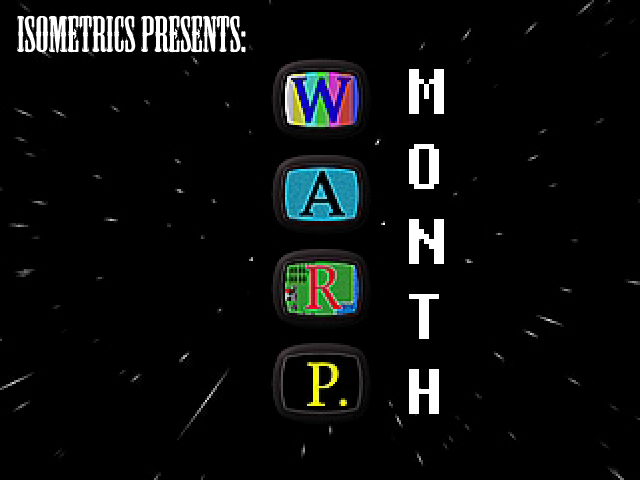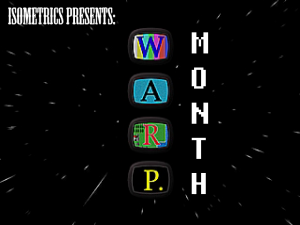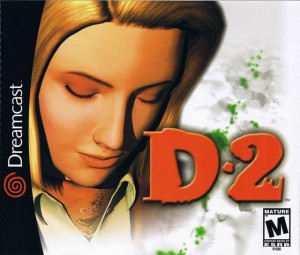In a wierd mix between the Thing and the Happening, D2 is the epitome of the messed up imagination of Kenji Eno and the final chapter of the Laura Trilogy and his career. In the final part of WARP Month, Isometrics looks at what on earth happened in Alaska…
Welcome to Isometrics, for one final time a transWARPed tumultuous treatsie on the literary world of video games. WARP month is coming to an end, which will likely see me returning to exploring something more contemporaneous. But before Eno finally took a bow and left this industry, he left one final game (not counting the WiiWare game released in Japan) that was probably the most challenging, most unique, and most bizarre game he would ever make. Yes, the man who made a video game for the blind and shipped games with condoms managed to top those things.
It is also his most tragic failure, from a commercial, critical and execution standpoint, not really selling anywhere near the number of copies he felt it deserved,with critics far more lukewarm than previously. There wasn’t the same massive disparity in scores and opinions that there was in D (which had a 90% score from Gamefan and several “worst horror game of all time”) or Enemy Zero (which had an 89% score from Consoles Plus and a 17 from Génération 4). It’s really a shame because this to me is a culmination of Eno’s ambitions with the Laura trilogy and the logical end to his decade of being in the games industry.
I’ve mentioned somewhat off-handedly that a big theme running through the Laura trilogy is that all three games explore the notion of what it means to call a video game an “interactive movie”. The original D was more an experiment to see just what monstrosity you’d create if you took the interactive movie title literally, with things like a 2 hour time limit and no pausing and a virtual actress. Enemy Zero was kind of a middle ground, more about taking what worked thematically in a film and modifying it to fit the way in which players inhabit a character when they consume a work of gaming. This and the fact that there are most substantial mechanics is probably part of the reason for its appeal.
So what of D2? Well, the answer to this is somewhat mixed, in part because there is in fact two versions of D2. The original plan for the game was an Alone in the Dark style survival horror game for the never released M2, a planned successor to the 3DO. The only relics of its existence was a short video filmed at a trade show, which had a sword, and some not entirely terrible textures for 1998.
The M2 never saw the light of day however. Instead of trying to port the game to longtime supporters Sega’s new console, the Dreamcast, Eno decided to completely redesign the game. By completely redesign, I mean that most exhaustively. The gameplay style, the narrative, the narrative structure, the characters, the setting, the art style. Basically the only things retained was a character named Laura, the compact from the original D and a little in joke right at the beginning which showed footage of the original D2 trailer as an in-flight movie.
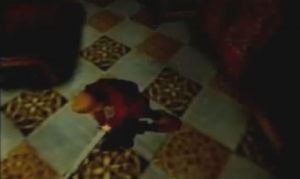
Now, making a game twice takes a long time, and so the game didn’t see a release until December 1999 in Japan. In the three years between a certain game came out by another japanese auteur. This one sought to explore bold controversial themes and the nature of the interactive movie but unlike many of Eno’s games, was a massive hit, critically and commercially. Part of it was not only was it a great game with a well directed narrative, but also worked hard to link the narrative and gameplay elements in a way no other game had really attempted. It was instantly successful and immediately influential, including to Eno. It seems like the idea Eno had was to do to horror what Kojima had done to action games, in that he wanted to take the best elements of both a well written narrative and a well designed game and combine the two together.
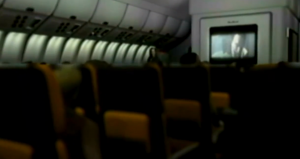
The basic plot of D2 has you playing as Laura Parton, who is on a jet plane that becomes the victim of cultish terrorists, eventually crashing in the Alaskan mountains. Despite being by fair the least suited for the role, in terms of attire and skill set and the fact you had just woken from a ten day coma, you are tasked with gathering as many survivors of the crash as possible, making sure they survive and finding a way out, possibly by following the suspiciously evil mountain path. All the while these strange mutations are happening to some of the survivors, exploding and mutilating their bodies in ways that begin at horrible then kind of transcend that into ludicrously grotesque. Both of the first survivors you meet, Parker and Kimberly (named and designed similarly to their counterparts in Enemy Zero), get infected, Kim in a deeply uncomfortable fashion that was censored in the US release of the game (We’ll get to that).
In D2 you see a lot more of Hideo Kojima’s more indulgent aspects, intermixed with Eno’s playfulness and sheer disregard for any sense of restraint. The game is, much like Enemy Zero, a loose adaptation of another horror film, in this case the 1982 movie The Thing, and like E0 it attempts to adapt far more in terms of the mood, setting and type of fear the original movie created, and bring into it issues of the sensual, and the questions of sanity and humanity that have frequented Eno’s work since the very beginning of WARP.
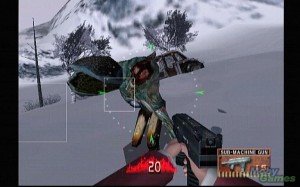
I say “attempts” because the game in several fundamental ways fails to meet the ambition, and this is a shame because Eno and WARP clearly tried so hard with it. The game mechanics, with a mix of genres from Dungeon Crawl, to light gun rail shooter, to RPG, to hunting simulation to a fully 3D evocation of the previous two games. There is a sense that Eno found a way to marry game design with his narrative vision. The problem is that both gameplay and narrative have huge fundamental missteps that kind of dent the vision somewhat, and unlike D and Enemy Zero, where a lot of the flaws are inherent to the FMV based gameplay and thus a necessary evil, in D2 it feels more like a genuine set of mistakes. The gameplay, despite its multi-faceted nature ends up wearing out its welcome very quickly, with very limited amounts of enemies that take far too many hits, large amounts of empty space just walking from one place to the next (made worse when you get a snowmobile which lets you skip enemy encounters) and somewhat uninspired gunplay, where your choice is to flail around with the Uzi with unlimited ammo or waste precious ammo from your other guns in order to take out enemies faster. It’s a victim of shallowness and rookie mistakes more than it’s necessarily bad. The more unforgivable problems of course are with the way D2 attempts to tell its story, starting most fundamentally with Laura herself.
Much like the concept of the interactive movie, the concept of a virtual actress also shifted from game to game, though in a manner more subtle than the wildly different structures. In D2, Laura is a mute protagonist, much like the last two games, saying a total of five words throughout the entire narrative. Mute protagonists in modern games isn’t necessarily impossible to pull off, but the game’s narrative needs to be built with that lack of a voice in mind, and this is where D2’s biggest weaknesses come from. There are very long, introspective cutscenes with large amounts of dialogue, but due to Laura’s lack of an ability to respond they come across at best as short character vignettes and at worst as a character talking to themselves on the path towards insanity. This really hurts the entire narrative given that many of these vignettes are about people who have lost their grip on sanity (on the way to becoming mutants) but given that most of your ostensibly sane allies converse with Laura in the same way the disjunct is somewhat less apparent. Eno’s direction also suffers too, with Laura smiling and nodding to conversations in a way that makes it seem like the character is unable to talk, but with several moments where she says a word or two and an implication from other characters that she responded in an appropriate way that we did not hear, this isn’t the case.
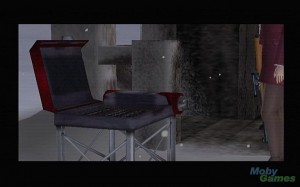
I think this is the crux of the problem with the game’s narrative style; while Kojima took dynamic action films as his inspiration, Eno appeared to take after slower more introspective fare instead, more Terrence Malik than Michael Bay. This is before of course we get into the odd Fin de Millénaire elements too.
Fin de Millénaire literally translates to “end of the millennium” and really is about the exploration of a time before the biggest change The imagery of darkness in particular is something played around with as a metaphor for solitude and the despair of loneliness. Kimberly’s darkness is internal- a relic of a truly horrible childhood which occasionally externalises itself as a vastly psychotic- while for the child Jannie and Laura herself, darkness is something external, forced upon them by a mysterious force actually named “The Shadow”. Then there is Linda, a drug that links many of the characters and allows the worst aspects of humanity to run rampant. Also apparent throughout is the mysterious “outside looking in” Christian subtext, evoking ideas such as the rapture.
The game has a huge amount of ideas but struggles to find focus with them, instead really scattering all of its anxieties across the four discs, only tying up metaphorically (but not narratively) right at the final confrontation with the shadow, which consists of psychedelia and a fantastic motif of taking away Laura’s senses, which in the same way takes away your hearing (the sounds of the game), sight, and then finally your movement and almost your life, before you invoke a Deus Ex Machina and celebrate New Year’s Day, meeting up one final time with the love interest. The credits is where the penny drops with the game, with many statistics and shots of natural scenes, a digital time capsule of the world before 2000 CE.
It’s a confused, wild unfocused mess, and most attempts to explain it end up the same way. One thing that can be said though is that it is fascinating, both funny (often unintentionally) and frightening in equal measure. It isn’t the best game WARP made, but it might be the one that summed up everything right and wrong about them the best.
Can you fathom the story more than I could? Did you import the game to play it since it was never released in Europe? What did you think of WARP Month? As ever, leave your comments down below, on the Geek Pride facebook page, Google + page, Twitter page or my own Twitter.


